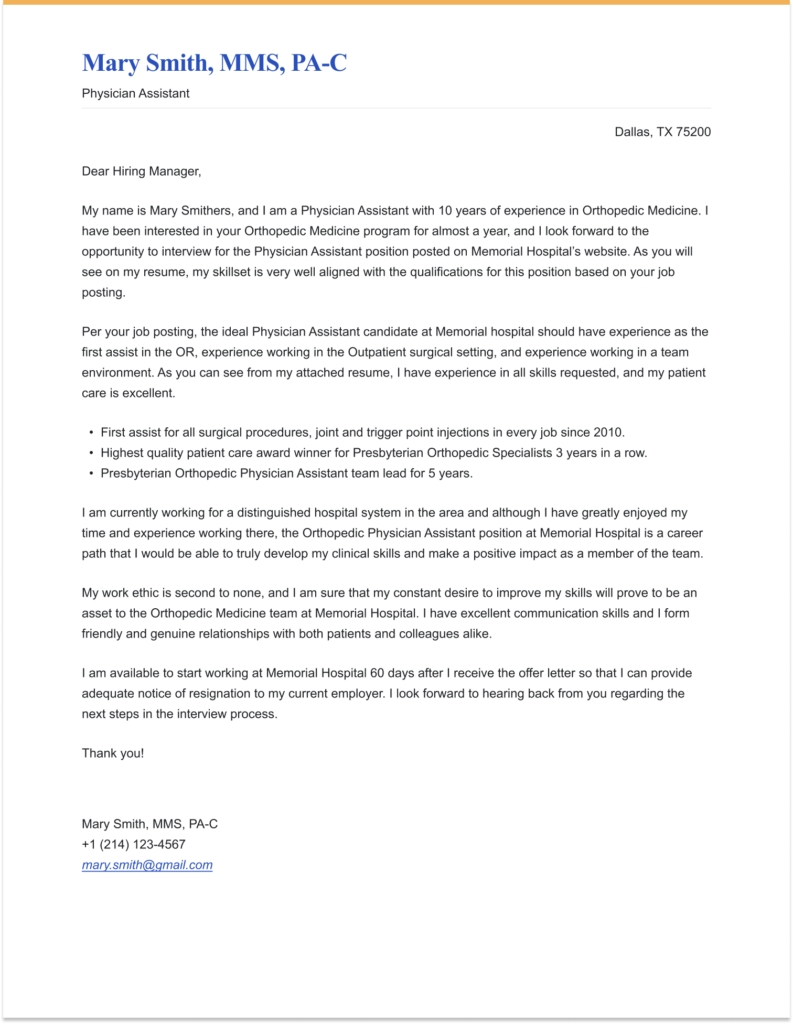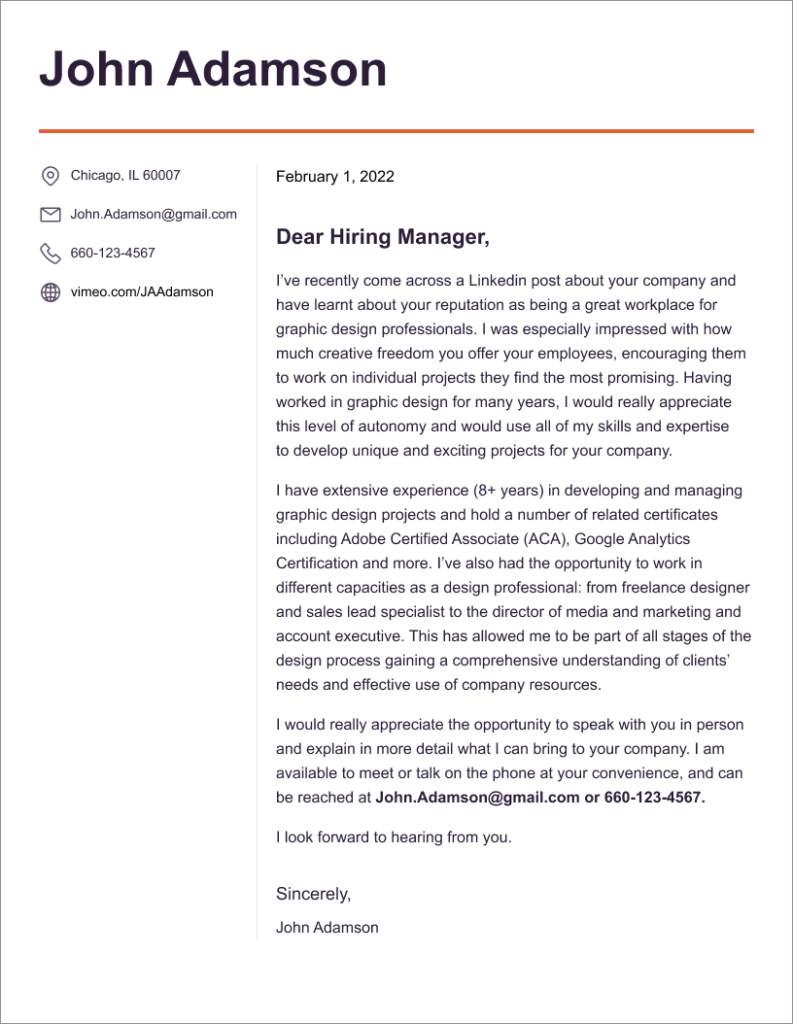Applying for the job of your dreams can be stressful — but it doesn’t have to be. With the right tools by your side, you will stay focused and composed even through the toughest application process.
But where do you start? We suggest you start at the beginning and build a strong application base — this includes a strong resume, cover letter and letter of intent. Below, we will look into the differences between a cover letter and a letter of interest and focus on the best practices for writing them both.

Table of Contents
What is the difference between a cover letter and a letter of interest?
The primary difference between a cover letter and a letter of interest is the purpose for which the letter is written.
A letter of interest is sent as an open offer and indicates that you are interested in working for a specific company in a potentially available role that matches your skillset and experience.
A cover letter, on the other hand, is typically sent out alongside your resume in response to a specific vacancy advertised by the company.
Basically, letters of interest focus on why you want to work for this company. Cover letters aim to explain why you are the best candidate for a specific job.
Cover letter example

Letter of interest example

How to write a letter of interest?
As we’ve mentioned above, when you write a letter of interest, you are not applying for a specific position. Instead, you are expressing your interest in working for a particular company. Because of this, your job with the letter of interest is to emphasize that you have the overall skillset that would be beneficial to the company you are applying for. If there is a specific position you are aiming for, you can also try to tailor your letter of interest to that specific post and highlight relevant qualifications.
So, then what is the purpose of a cover letter? Compared to the letter of interest, a cover letter is typically sent alongside your resume (here’s how to write a resume) and is used to apply for a specific position — you will typically send the resume and cover letter combo in reply to an advertised job offer. A cover letter is basically a collection of selling points that will get the recruiter interested in reading the rest of your application. Here’s how to write a cover letter.
Let’s see how to best structure a letter of interest
First paragraph: introduction
You should start off your letter of intent by introducing yourself and explaining what kind of work you do. This is also where you should explain why you are passionate about working for this company and what problems you can help them solve.
You can mention here that you know that they are not currently recruiting — but you may have the skillset and expertise that they wouldn’t want to miss out on.
Second paragraph: work experience
In this paragraph, you will need to pull out all the stunts to impress the recruiter with your experience and expertise. The goal is to make yourself as memorable as possible so that the recruiter will think of you the moment a position opens up.
In this part of your letter of interest, it’s best to focus on concrete achievements you’ve had in previous positions. You can mention the biggest projects you’ve worked on and how they’ve benefited the company, a crisis situation that you’ve handled, the amount of new business you’ve brought to the company — and more.
It’s also a good place to mention your most valued skills (foreign languages you speak, software you can use, personality traits that make you a good professional, etc.).
Third paragraph: call to action
Now it’s time to ask the reader of your letter to act. Think of what kind of outcome you are expecting out of your letter. Do you want them to email you, invite you for an interview, offer feedback on your letter, etc.
Include your most reliable contact information. Even if you have your email and phone in the header of your letter, you can repeat them here.
Tips for writing a letter of interest
When reading your letter of interest, the hiring manager should feel your enthusiasm and passion for working for their company. The tips below can help you make sure your enthusiasm and passion come through in your application.
- Personalize your application. This is one of the most important factors when it comes to the success of your application. Make sure you study the company you are applying for, learn about their mission and company culture. Then, do your best to make these elements come through in your letter of intent to illustrate that you are a good match for the in-company environment.
- Leverage your background. Include specific examples from your work experience that have allowed you to become a better professional. Avoid generalities and be as specific as possible — this will let the hiring professional see that you are genuinely passionate about your job and plan to bring all of your expertise to the new position.
- Explain your motivation. Another important piece of information to include is what has motivated you to write this letter and why you want to work for this specific company. This can include your career goals and how they align with the position you are applying for.
Letter of intent vs letter of interest
Even though these two terms are sometimes used interchangeably, there is actually a slight difference between the letter of interest and the letter of intent. This difference lies in the nature of commitment.
Basically, a letter of intent shows a higher degree of commitment compared to a letter of interest. It states your intentions to work for this particular company — and you may even have a particular role in mind. It’s very similar to a letter of interest in the sense that you should focus on why you want to work for this specific company. However, a letter of intent is more “serious” than a letter of interest and signifies that this company is your first and sometimes only choice.
Summing thins up
- A letter of interest is a letter that aims to express your interest in working for a particular company and inquire about potential employment opportunities.
- A cover letter is a letter that you send together with your resume when applying for a specific position. It serves as a brief introduction of your best qualities and aims to “sell” your application and get the recruiter interested.
- A letter of intent is similar to the letter of interest but presupposes a stronger level of commitment.
We hope that this has been helpful and you are now one step closer to landing the job of your dreams. Learn more about the application process in our blog. Here’s the next read we suggest: Cover Letter vs. Resume: What’s the Difference?